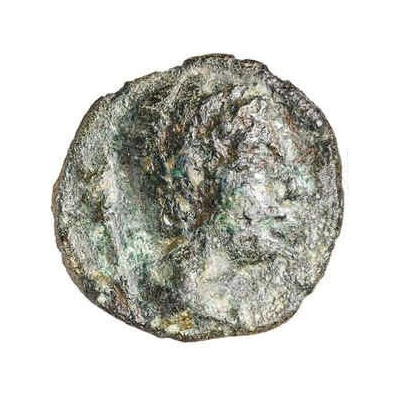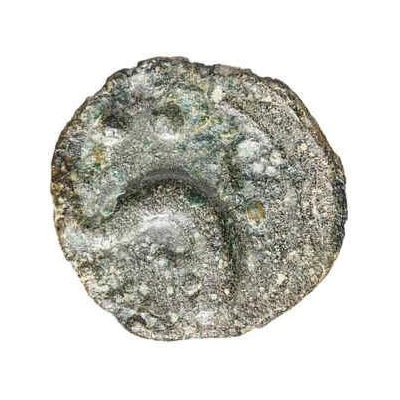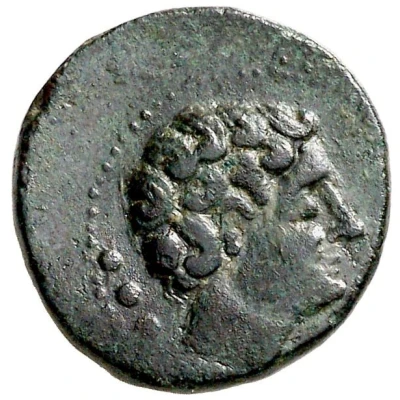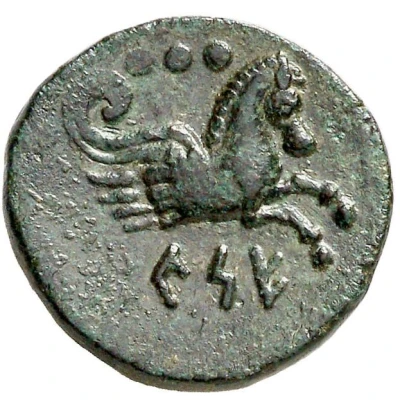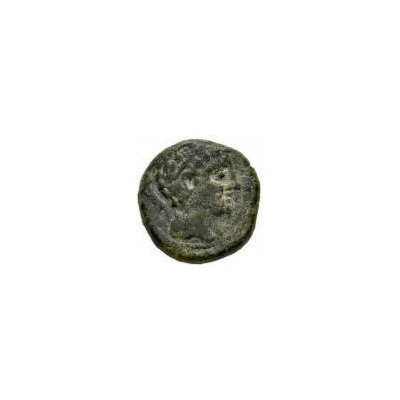
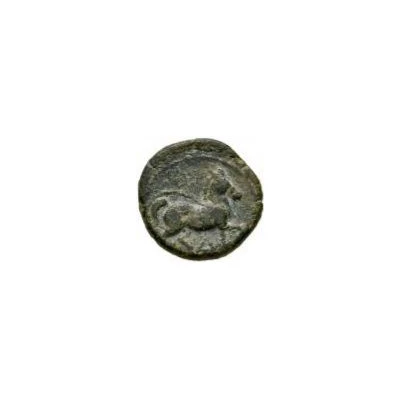

© Marti 11933
½ Unit Trotting horse 150 BC - 100 BC
| Bronze | 5.39 g | 19 mm |
| Issuer | Cessetani people |
|---|---|
| Type | Standard circulation coin |
| Years | 150 BC - 100 BC |
| Value | ½ Unit |
| Currency | Unit (early 2nd century BC) |
| Composition | Bronze |
| Weight | 5.39 g |
| Diameter | 19 mm |
| Shape | Round (irregular) |
| Technique | Hammered |
| Orientation | Variable alignment ↺ |
| Demonetized | Yes |
| Updated | 2024-10-10 |
| Numista | N#357695 |
|---|---|
| Rarity index | 94% |
Reverse
Horse to the right, trotting, below and between the legs Iberian legend (KE)SE.
Script: Iberian (Levantine)
Comment
(Tarragona). Main base of the Romans in Hispania. He issued emporitan imitation drachmas with the legend Tarakonsalir in the 3rd century BC. Later he minted with the Kese legend from the end of the 3rd to the 1st century BC, denarii, quinaries, ases, semises, trientes, quadrants, sextants and uncias. It became the Tarraco Latin mint.Interesting fact
The Cessetani people were a tribe that lived in the area that is now modern-day Spain, and their coinage was characterized by images of animals, such as the trotting horse on this coin, which was likely meant to symbolize strength and speed.
